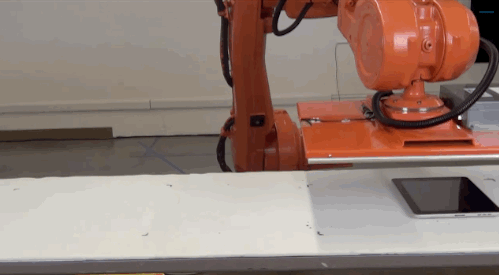Did you know that the same forces that generate static electricity can be strong enough to pick up and move boxes, crates, and other objects? A robot startup named GrabIt is making mechanical "hands" that use electrostatic attraction to gently pick up and transport objects. Powered electrodes, either on the surface of the gripper or on flexible, tentacle-like fingers, generate and maintain powerful attractive forces between nearly any object. In demos, the company has shown its grippers can pick up everything from cans and fruits to iPads, boxes, crates, and sheets of glass, silicon, or fabric.
Grippers are the business end of robots: without them, machines wouldn't be able to pick up or manipulate objects. But it's not easy to pick things up: many robots rely on mechanical movements or vacuum suction, both of which are big, expensive, and power hungry. More importantly, they can be less flexible than grippers that use electrostatic attraction — often they need to be reconfigured to pick up particular objects. And they can struggle to pick up fragile objects like sheets of glass. GrabIt says it's overcome that issue with its powered electrodes — they evenly distribute force across a large surface area. And the technology's not just for robot hands. One of the more promising ideas is to build the electrodes into conveyer belts to help sort objects or allow for steeper inclines on manufacturing belts.
The company, which was founded in 2011, is still developing its grippers, but in the meantime, you can check out some videos of the devices in action. We just wish we had one of these for those pesky stuffed animal claw machines that have a penchant for eating quarters.
